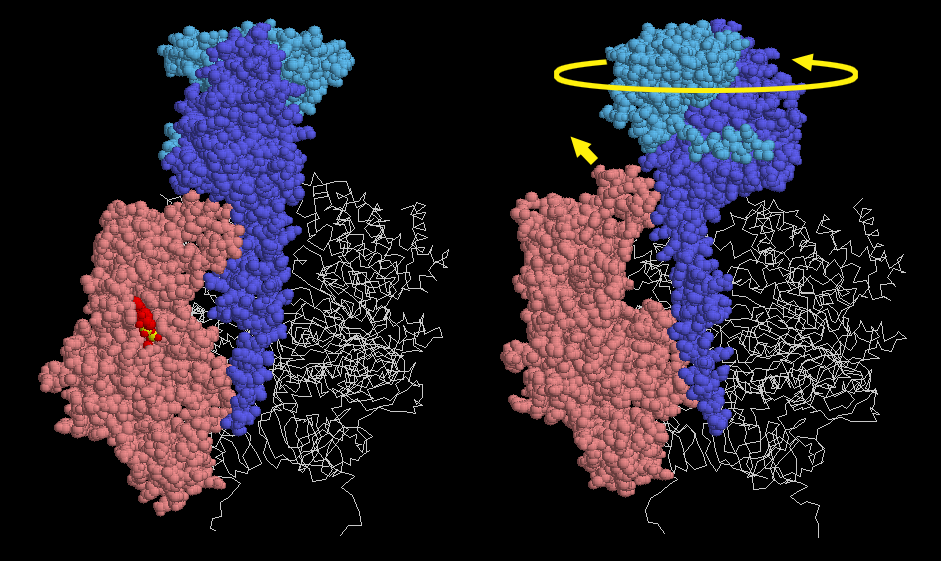|
Inhaltsübersicht | Nanomaschinen | Moleküle | Programme | Kurse | Fun | Links |
||
| > |
ATP Synthase

Exploring the F1 Structure
PDB entry 1e79 includes the F1 motor of ATP synthase. When operating as a generator, it uses the power of rotational motion to build ATP, or when operating as a motor, it breaks down ATP to spin the axle the opposite direction. The two difficult steps in the synthesis of ATP are the binding of ADP and the release of ATP--the formation of the phosphate-phosphate bond is not the major problem. As the axle turns, it forces the motor into three different conformations that assist these difficult steps. Two states are shown here. The one on the left shows a conformation that assists the binding of ADP, and the one on the right shows a conformation that has been forced open to release ATP. Notice how the oddly-shaped axle forces the change in conformation.You can look at this structure yourself by clicking on the accession code and picking one of the options under View Structure. The central axle is composed of chains G, H, and I in this file. Three of the subunits, chains D, E, and F in the file, are the ATP-generating parts--subunit E is shown in red in the left picture and subunit D is shown in the right picture. Subunits A, B, and C are similar, but play a structural role, holding everything in place. In these pictures, I have removed the two nearest two subunits to make the interaction clearer.
Next: Exploring the F0 Structure
Previous: ATP Synthase
Last changed by: A.Honegger,